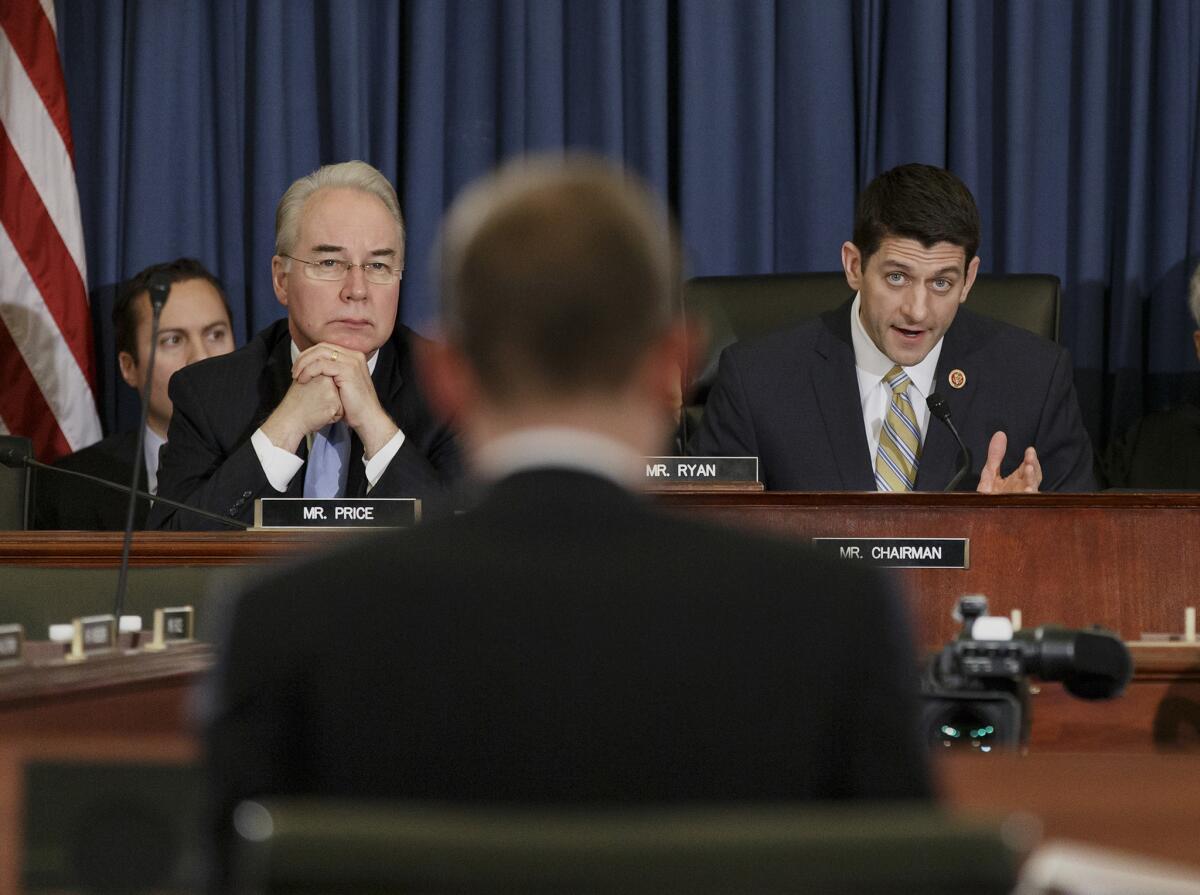GOP moves to bring a bogus New Math to the federal budget

Doug Elmendorf has been viewed as a marked man in Washington ever since the last election, when Republicans won a majority in both houses of Congress for 2015. Now confirmation comes via Bloomberg that he wonât be reappointed to his job as director of the Congressional Budget Office in January.
The GOPâs goal is to bring in someone more amenable to employing âdynamic scoringâ in the CBOâs analysis of tax and budget proposals. Elmendorf stands in the way of wide-scale manipulation in congressional budget analysis, and that wonât do.
âDynamic scoring,â Washingtonâs phrase of the moment, is a method that aims to incorporate the broad economic effects of a policy into the analysis of that policy. For Republicans, the virtue of dynamic scoring is that it allows them to claim that, say, a tax cut will spur so much economic growth that it will end up producing more revenue, not less -- that it will pay for itself.
Distilled to its essence, this argument is represented by the notorious âLaffer Curve,â Art Lafferâs assertion that lowering taxes is so stimulative that the tax base expansion more than makes up for the tax reduction.
Under Elmendorf and his predecessors, the CBO has employed dynamic scoring in narrow cases, but has remained wary of using it broadly or to estimate the macroeconomic effects of budget and tax plans. The reason, the agency stated in November, is that these effects are âhighly uncertain.â When you try to impose certainty on highly uncertain effects, youâre opening the door to manipulation. And when thatâs done in the name of the bipartisan, traditionally independent-minded Congressional Budget Office, youâre wrecking the CBOâs credibility.
Douglas Holtz-Eakin, a Republican former CBO head, cautioned the House Ways and Means Committee about instituting dynamic scoring for the budget or tax bills. He bowed to the Republican majorityâs desire to view dynamic scoring positively, calling it âgood science.â
Then he listed the problems with it. Used properly, dynamic scoring produces several estimates, each based on different assumptions about the future. But Congress demands a single estimate from the CBO, which means that it must choose from among a huge menu of assumptions, requiring âresolution of some very knotty technical and philosophical issues.â In not so many words, dynamic scoring lends itself to cherry-picking.
Politicians offered a range of possible outcomes of their policies always choose the most favorable. Thatâs what Ways and Means Committee Chairman Dave Camp (R-Mich.) did this year when touting his supposedly fairer tax proposal, as Paul Van de Water of the Center on Budget and Policy Priorities explains. And itâs why House Budget Committee Chairman Paul Ryan (R-Wis.) is desperate for the CBO to dynamically score his budget-cutting proposals -- they canât be shown to make economic sense any other way.
In the end, Holtz-Eakin implied, dynamic scoring has been vastly oversold: âOne occasionally hears that dynamic scoring is desirable because it will be more accurate,â he said, but âit is not likely to improve accuracy.â If anything, it might make budget analysis even more complicated.
Yet conservatives looking to support their tax- and budget-cutting fervor with what appears to be solid statistical science still push dynamic scoring. Its proponents often point to the capital gains tax to show how tax cuts produce higher revenue. But as has been noted by economist Bruce Bartlett -- no fan of dynamic scoring despite holding solid Republican credentials -- the capital gains tax is a special case. Itâs our only strictly voluntary tax, since its payers can decide when to pay them (by timing the sale of taxable capital assets).
Citing the cap gains tax, therefore, is the essence of cherry-picking. For a clue to how the process works, consider a Wall Street Journal editorial in March 2013, praising the Senate for a resolution endorsing dynamic scoring.
After a cap gains tax cut in 2003, the Journal wrote, the CBO projected a fall in cap gains revenue. Instead, âactual capital gains revenue rose despite the lower tax rate to $109 billion in 2006 and $126 billion in 2007.â
Well, yes. What the Journal didnât point out was that capital gains revenue then fell, to less than $69 billion in 2008 and $36.7 billion in 2009. Obviously, capital gains revenue had almost nothing to do with the tax rate, but with a troubling little thing called the economic cycle.
Dynamic scoring would have projected increased tax revenue into the limitless future, because it would account only for the putative stimulative effect of the tax cut, leaving aside every economic factor. If youâre looking for an explanation of why the CBO has remained wary of macroeconomic dynamic scoring, there it is.
The shame of the GOPâs dumping Elmendorf as the CBOâs director is that it signals the end of the CBOâs role as a sober analyst of policy and legislation. Over the years, its analyses have sometimes angered Democrats, sometimes Republicans; sober analysis is essentially nonpartisan. CBO estimates havenât been immune from criticism by analysts outside Congress, either. But no one has claimed that its analyses arenât well grounded or that it doesnât arrive at its conclusions honestly. That may be about to change.
Keep up to date with the Economy Hub. Follow @hiltzikm on Twitter, see our Facebook page, or email [email protected].
More to Read
Sign up for Essential California
The most important California stories and recommendations in your inbox every morning.
You may occasionally receive promotional content from the Los Angeles Times.










